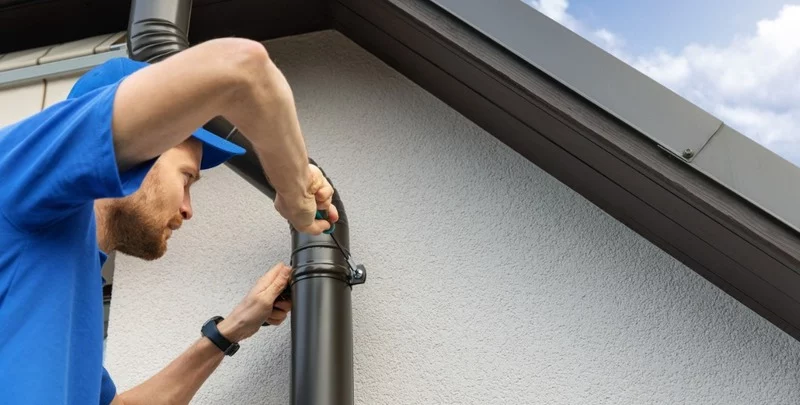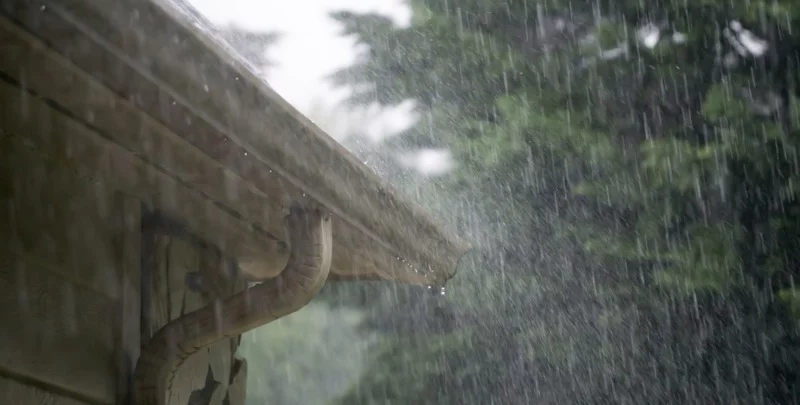4 Ways to Prevent Rainhead Overflow

Anyone who has experienced overflowing gutters and downpipes will appreciate the importance of a functioning rainhead. But when your rainhead malfunctions it can result in an unwanted waterfall down the side of your home or worse.
First of all, what exactly is a rainhead? A rainhead is a container located between a gutter and downpipe that allows the water to flow away from the roof, either into drains or to your rainwater tank.
Rainheads are an essential design element to any home where trough gutters, box gutters or any internal gutter systems are used. They prevent rainwater from overflowing into the building as internal gutters can be susceptible to blockages and overflow.
It’s important to look after your rainhead – after all, it’s there to help prevent overflowing gutters. During heavy rainfall, you don’t particularly want it adding to waterflow problems. Let’s take a closer look at the function of a rainhead and ways to prevent overflow.
What’s the Difference Between a Rainhead and a Sump?
A rainhead is an external box that sits outside the roof and gutter. It is either built onto the guttering itself or connected by a pipe through the flashing. The rainhead features a drain filter connected to the downpipe. This is an opening high up on the outer face that essentially acts as a funnel. It allows excess stormwater to flow freely out and away from your home.
A roof gutter sump is a form of water container reservoir set inside the guttering itself. The sump collects, filters and diverts water into downpipes internally. The sump pit is a lowered pit section containing a filtered drain which leads to the downpipe.
Common Types of Rainheads
Rainheads have been around for centuries, so it’s no surprise that they come in many shapes and sizes.
If you’re looking for a particular design, you’ll most likely find something that suits your home’s architecture. Some of the more common rainhead styles and designs are:
- Box rainhead – a standard and practical square or rectangular design.
- Curved rainhead – a box with a curved bottom, allowing water to flow easily into the downpipe.
- Round rainhead – these are cylindrical or conical shape.
- Segmented rainhead – more traditional and ornately designed.
- Tapered rainhead – wide at the top and thin at the bottom, tapered for improved drainage.
Given the important role your rainhead plays, it’s crucial that it is installed professionally and functioning properly. Let’s take a look at ways to keep the rainwater flowing properly.
1. Ensure Your Rainhead is Up to Standard
If you’re experiencing problems with an overflowing rainhead, the major issue could be a non-compliant, poorly-fitted model. In many cases, rainheads have been installed that don’t comply with industry standards.
While repairs can be made, sometimes a quick fix can result in worse problems down the track. The best solution is to install a rainhead which is in compliance with industry standards and allows the collection of excess rainwater to prevent overflowing gutters.
If you’re concerned about the way rainwater is flowing away from your home (or into your rainwater tank), the best course of action is to consult a professional plumber for advice.

2. Regular Cleaning is the Key
Keeping an eye on the rainhead screen is a key to keeping the water flowing properly. Most importantly, make sure it isn’t cluttered with leaves, twigs, insects, moss and other debris.
Some screens can be cleared in place while in other cases it’s recommended to remove the screen for a more thorough cleaning.
Take a note of what kind of debris is building up on the rainhead screen. In some cases, a clog might be caused by a buildup of lichen or moss on the roof, which can result in a serious blockage. This may indicate that your roof needs cleaning.
Given the height of your rainhead, you will need a ladder to reach the screen for cleaning. If you’re not confident in making that climb, leave it to a professional plumber.
3. Check the Inlet Pipe
It’s also important to check that the inlet pipe coming from your gutters is positioned for optimum performance.
For a start, it should be cut to the same angle as the rainhead screen, leaving a gap of about 30-50mm (1-2 inches) between the end of the pipe and the rainhead screen. This gives the incoming water the best chance to pass through the screen while still allowing enough space for the debris to escape and be cleared.
4. The Position of Your Rainhead
If you have a rainwater tank, it’s important that your rainhead is positioned high enough to allow a smooth flow of water.
In many cases, there will be water sitting in the pipes at all times, up to the level of the rainhead. When it rains, there needs to be enough head height to push that rainwater through the system.
If there isn’t enough height, when it rains there won’t be enough head pressure to push the water through the system into the tank. The result will be an overflowing rainhead.
The rainhead needs to be a minimum of 500mm (19 inches) above the height of the rainwater tank. That way the weight of the water will help push the water through the pipes effectively.
In Conclusion
A rainhead serves a crucial purpose in keeping rainwater flowing away from your home. However, if it’s not installed professionally or not maintained properly, it can do the opposite. The best practice is to keep the rainhead screen clean and, when in doubt, consult a qualified plumber.
Please note: This information is provided for advice purposes only. Regulations differ from state to state, so please consult your local authorities or an industry professional before proceeding with any work. See our Terms & Conditions here.